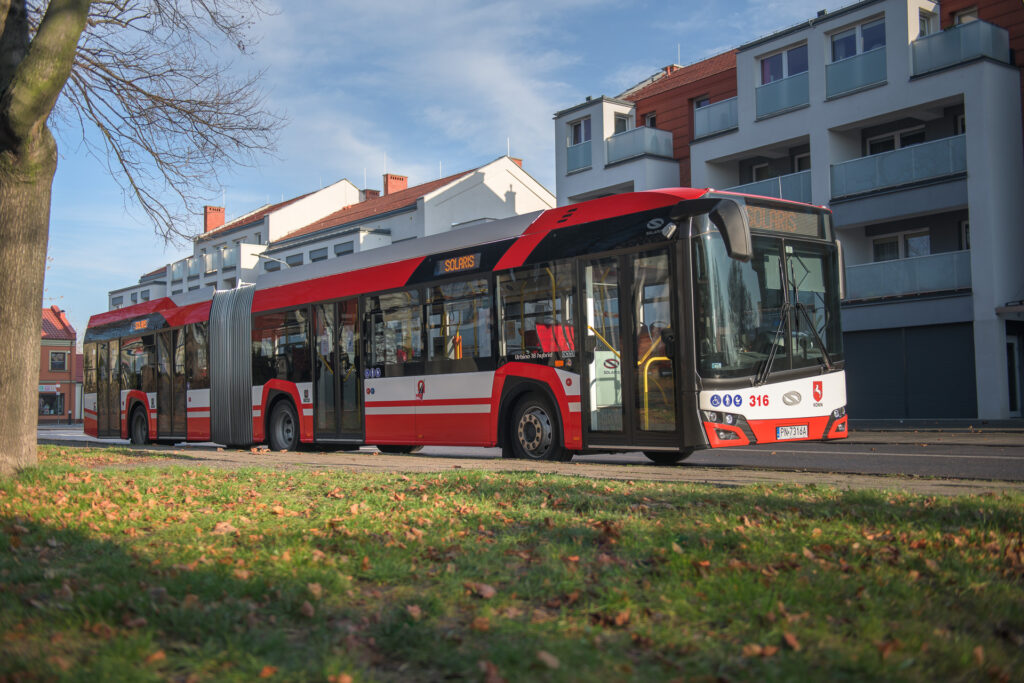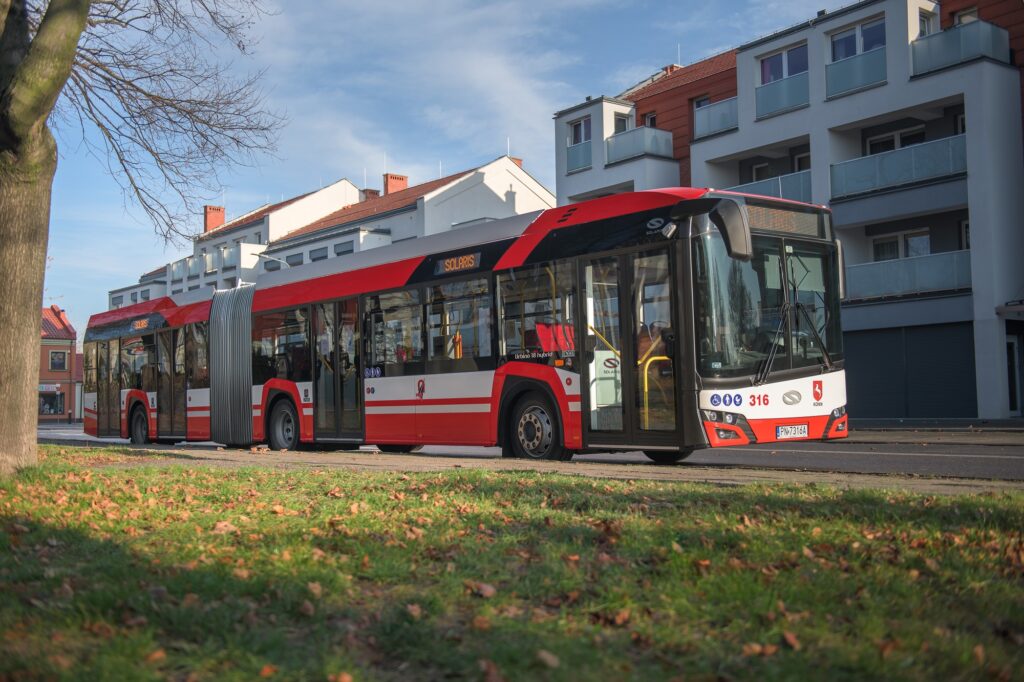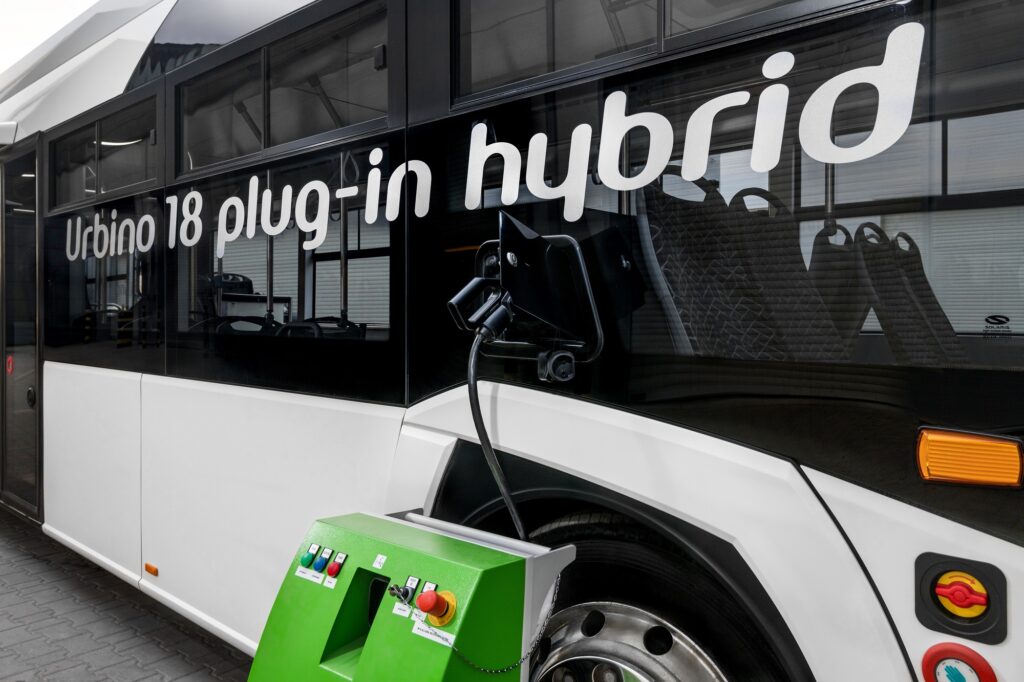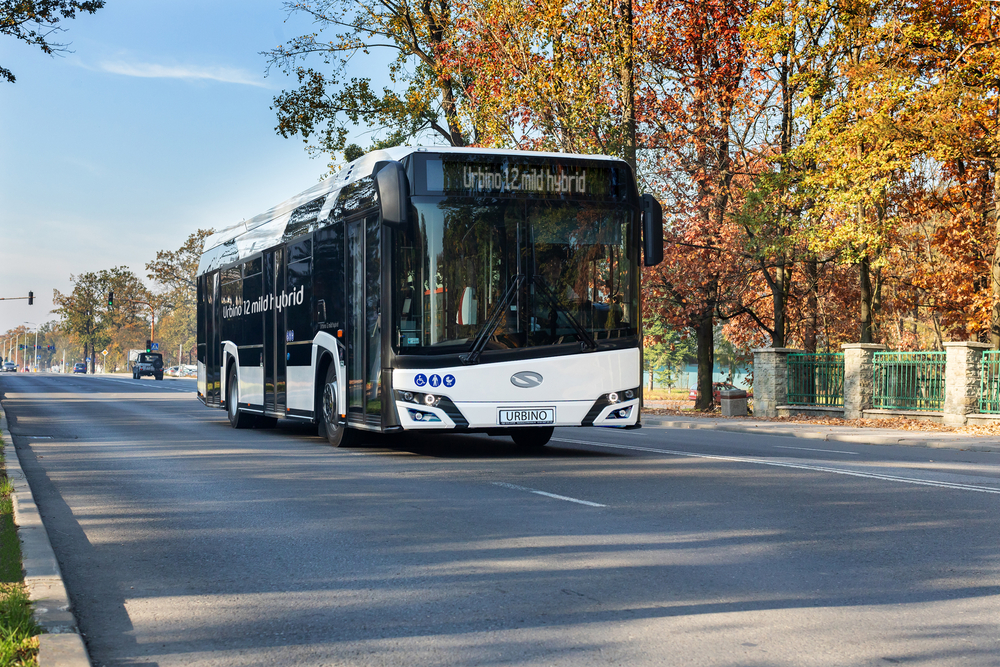
Hybrid buses – a stop on the road to electromobility
Hybrid buses are one of the solutions that are helping transport operators gradually move away from internal combustion vehicles. Although they are not as environmentally friendly as electric or hydrogen buses, they deliver a range of environmental and economic benefits and improve passenger comfort. How to make the most of their assets?
With hybrid buses, the fundamental concept of operation is corresponding to that of hybrid cars. Alongside the conventional combustion engine, hybrid vehicles are also equipped with an electric motor, which acts both as a driving engine and an energy generator. Under normal driving conditions, the energy generated by the engine drives the wheels of the vehicle. However, when decelerating, the braking wheels provide power to the electric motor, which converts the energy into electricity, subsequently used to drive the vehicle. In this way, a proportion of the energy that would normally disperse as heat and noise within the braking system can be recovered and successfully reused.
Hybrid buses – available options
The energy thus recovered needs to be stored for future use. At this point, a distinction is made between hybrid buses and plug-in hybrids. In the case of hybrid buses, energy is stored in supercapacitors, i.e. heavy duty capacitors capable of fast charging and discharging.
These hybrid buses can also be programmed to use zero-emission mode at the most critical times, i.e. in the vicinity of passenger stops. Some examples include the Stop & Go and Arrive & Go systems. In the first case, the combustion engine is switched off when reaching the bus stop and when the bus then restarts, it travels in zero-emission mode for a certain distance using the stored energy. The Arrive & Go system also extends this functionality to the moment of approaching a stop in emission-free mode. Both solutions reduce exposure of passengers to exhaust fumes, maximising their environmental benefits.

Plug-in hybrid buses, on the other hand, store energy in batteries – comparable to all-electric vehicles. However, there is significantly less battery capacity in hybrid vehicles than in battery-only models. Plug-in designs can additionally be charged using an external charger, further increasing the range the vehicle can travel in zero-emission mode. Remarkably, under the European Union’s Clean Vehicle Directive, only plug-in hybrids are classified as clean by virtue of their ability to be connected to external charging.

The last type of hybrid buses are mild hybrid vehicles. Their design is similar to that of conventional hybrids, but they use electric engines with significantly less power. This solution is thus more appealing in terms of being more cost-effective, at the same time retaining the boost of electric motor.

The benefits of hybrid technology
Essentially, the key advantage of hybrid vehicles comes in the form of reduced combustion, resulting from the use of recovered energy. Ultimately, the buses are less expensive to operate and more environmentally friendly, producing fewer emissions for the same distance travelled as their all-fuel equivalents.
Although hybrid vehicles are inferior to battery and hydrogen buses in key aspects, they remain an excellent option for bridging the gap to fully zero-emission public transport.
Many factors may prevent a city from fully electrifying its fleet over a period of time. This is where hybrid buses come to fill this gap.